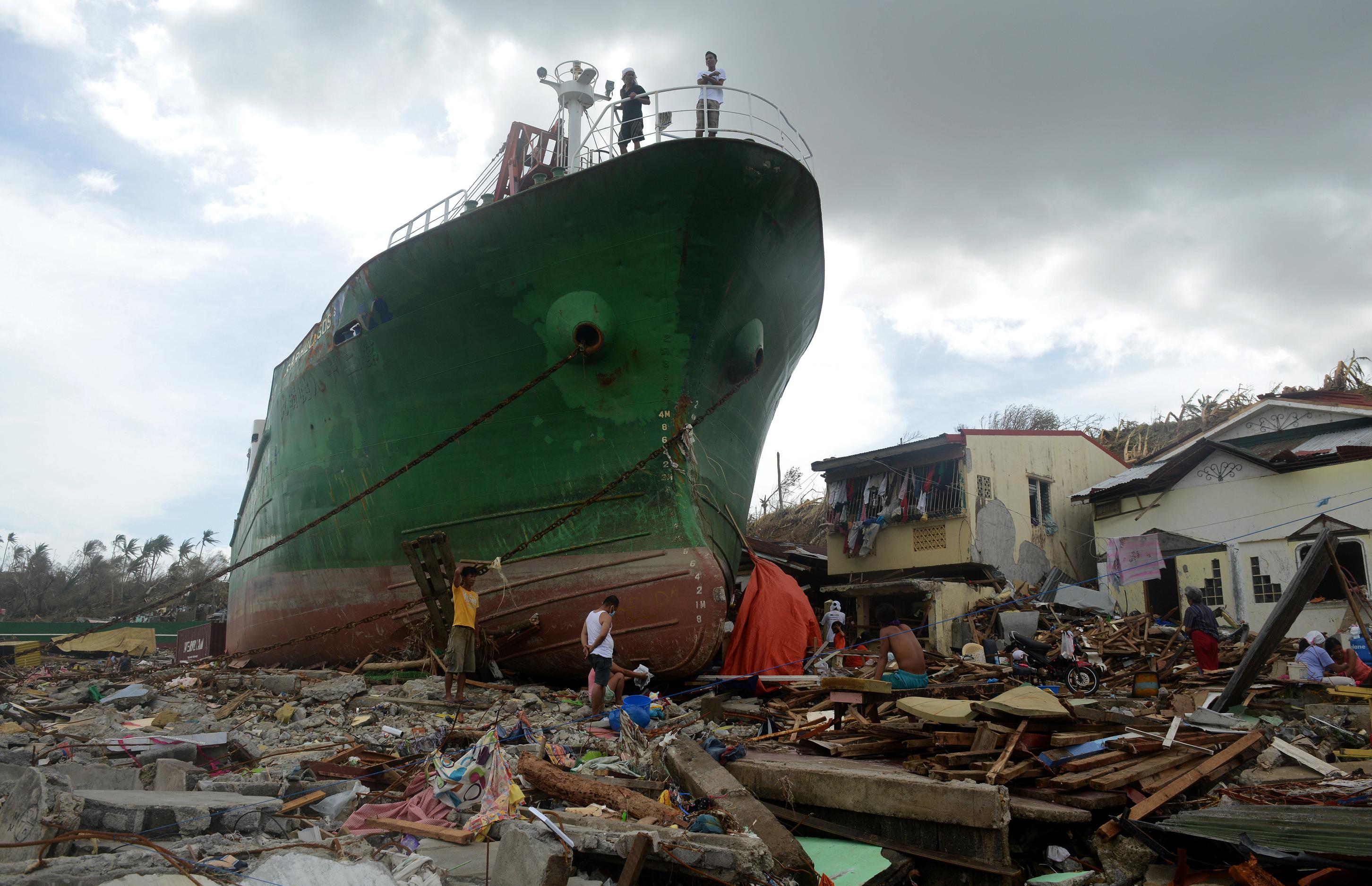Geography has not been kind to the Philippines. With 6 to 9 typhoons making landfall every year, almost 900 earthquakes annually— including the one that hit the island of Bohol, killing more than 200 people just last month—and more than 20 active volcanoes, it gets more than its share of natural disasters.
Disasters in the Philippines are also particularly deadly. Just two years ago, Tropical Storm Washi killed over 1,000 people. The country led the world in disaster mortality in 2012 with more than 2,000 people killed. China was second with just 802. The high rate of poverty and the state of the country’s infrastructure also make it particularly vulnerable to the kind of devastation we’re seeing this week.
While the Philippines has earned global attention for its rapid economic growth in recent years, it remains a very poor country with around 40 percent of the population living on under $2 per day. The country’s unemployment rate is high and around a third of its workers are in agriculture, making them particularly vulnerable to severe weather.
A 2005 World Bank report discussed why poverty has exacerbated the Phillipines’ frequent disasters, writing, “Rapid urban growth and lack of tenure, for instance, have forced many to live and work in high-risk areas, such as on the shores of Navotas or flanks of active volcanoes. Families may have little choice but to return to such areas post disaster even when resettlement options are available because of the importance of proximity to place of work.”
The country’s chronic infrastructure problems are another concern. Damaged roads are hampering the relief effort in this disaster as they did after last month’s earthquake. Only 20 percent of the country’s roads are paved and the World Economic Forum has identified “inadequate supply of infrastructure” as one of the primary obstacles for the country’s economic growth.
Current President Benigno Aquino has made infrastructure development a priority since coming into office in 2010. The government increased spending by 47 percent on the country’s roads, airports, and public works in the first eight months of this year. The Philippines has also invested heavily to improve flood-resistant construction.
Unfortunately, the relationship between natural disasters and poor infrastructure is mutually reinforcing. The Bohol earthquake caused more than $51 million in damage, largely to roads, flood control facilities and bridges, exactly the kind of construction that makes future disasters more severe.
The World Bank report noted that “Disasters can also contribute to longer-term states of poverty by delaying development of poorer areas. [An] initial poverty mapping exercise of the Philippines reports that the results from the rapid appraisal demonstrate the importance of road conditions and distances to “centers of trade” as a determinant of poverty. Yet disasters destroy roads and many, particularly feeder roads, may not be repaired for several years after a disaster.”
In a cruel cycle, poverty and underdevelopment make disasters worse, and disasters make poverty and underdevelopment worse.
